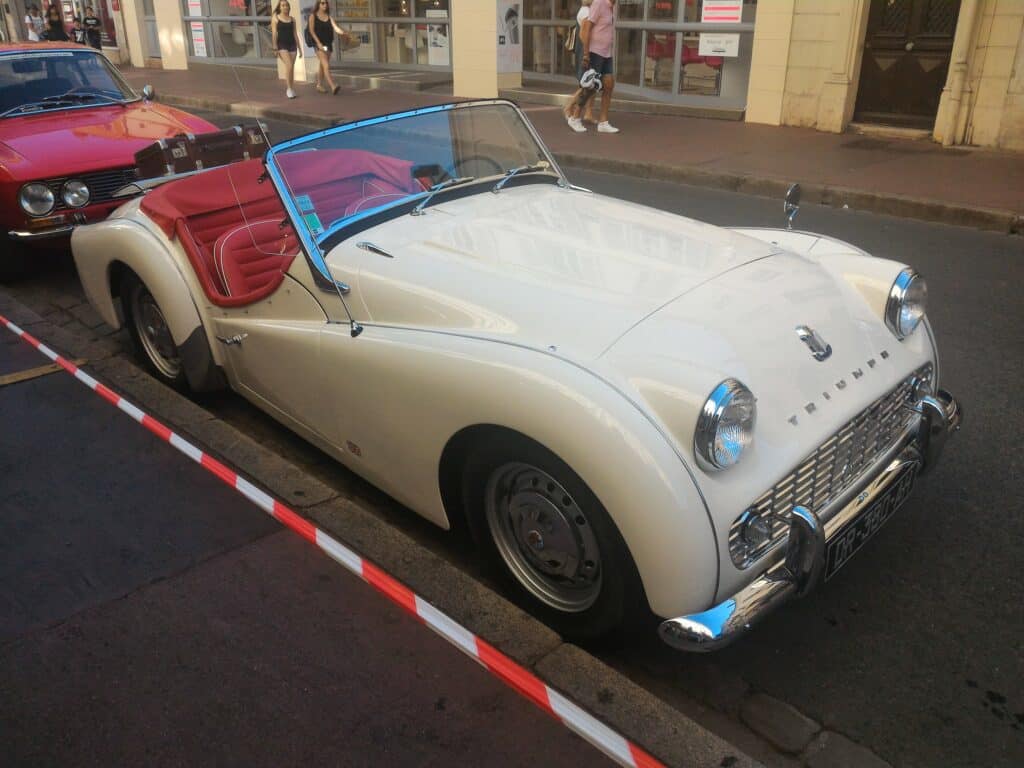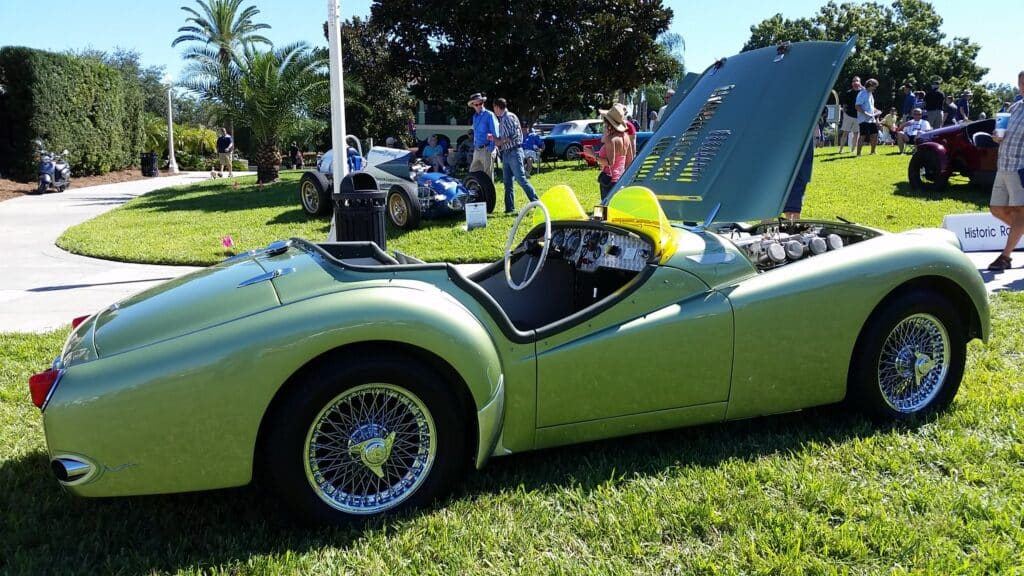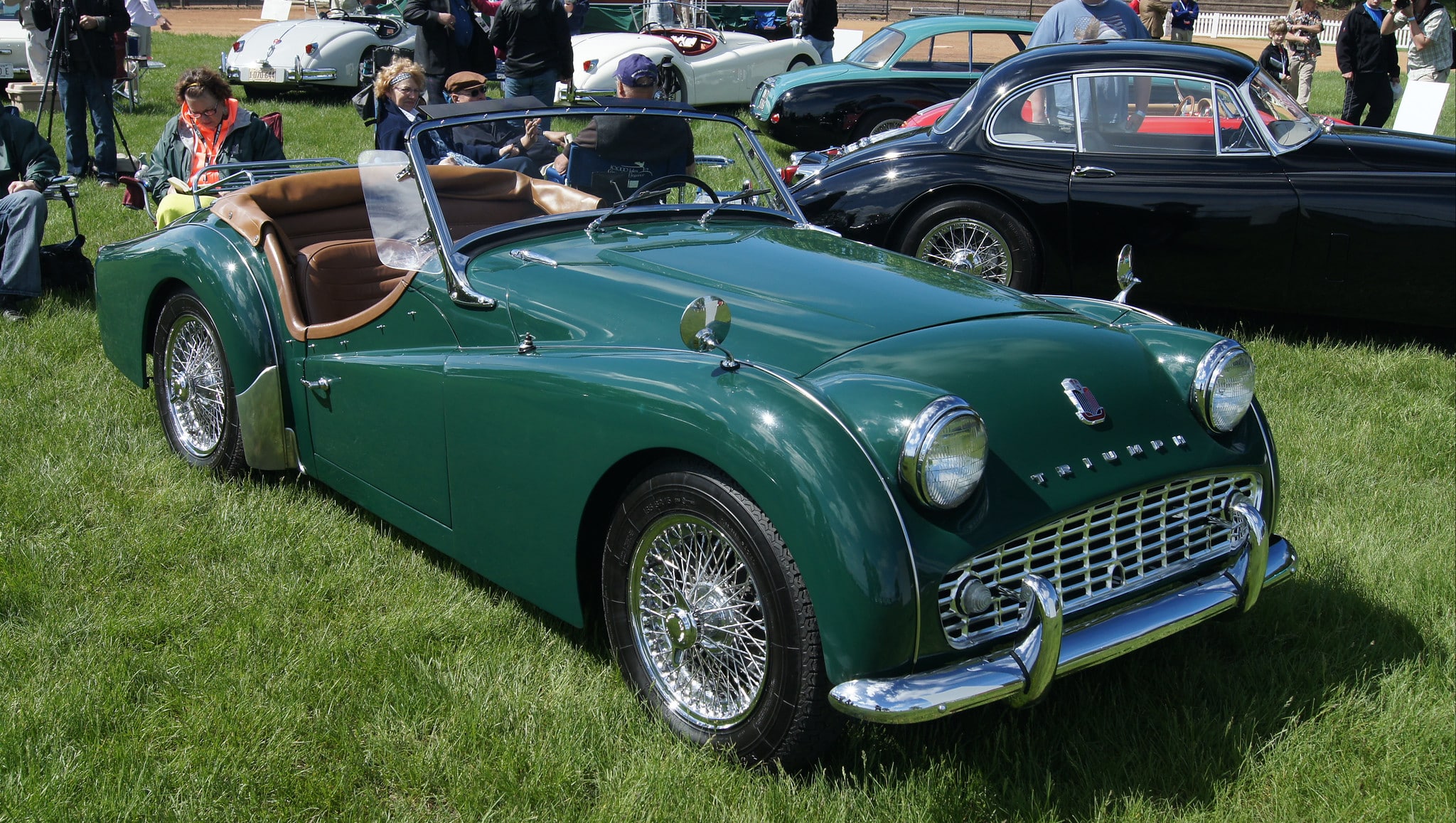Over the years, many once famous and influential car makers have gone bust and have consequently wiped off the map. This is most evident probably with the British automotive industry, which was decimated during the 70s and 80s. For some manufacturers, this was because of build quality and lack of appeal. Or, in other words, the cars they were making were downright awful and poorly made. Others were doomed by a combination of bad luck and poor business decisions. Still, that doesn’t mean all cars made by now-instinct British automotive manufacturers weren’t good. In fact, some of them were truly excellent and have a lot to offer even today. One of them is, without a doubt, the famous Triumph TR3 roadster, especially when it is in its facelifted TR3A form. This is one of those cars that are the embodiment of elegant beauty and pure driving excitement.
The story behind the Triumph TR3A
With its roots tracing back to the 19th century, the Triumph is one of the oldest names in the industry. First, however, they only made bikes, with their first car leaving the factory in the 1920s. Since then, their vehicles have been praised by both drivers and automotive experts. This was because of their blend of attractive looks, everyday practicality, and competitive performance, which came at an affordable price.
While Triumph made many amusing sedans and coupes over the years, such as the Dolomite or Herald, it’s their roadsters that they are best known for. For a start, there’s a legendary Spitfire, a car that doesn’t need much introduction. Then there’s a long-lasting TR range, whose production spanned three decades and six car generations. And it all started with TR2, which was introduced in 1953 and was an instant hit.
Having realized the potential, Triumph came up with its successor, the TR3, just two years after. The new car incorporated many improvements addressing shortcomings noticed in the outgoing model. This included more efficient brakes and upgraded suspension, among other things, which gave it an even better driving experience. While the first TR3 sold well, after a few years, it became apparent its styling was becoming a bit dated. Again, Triumph decided to solve the problem by introducing an updated model, which unofficially became known as TR3A.
How does Triumph TR3A look
Predictably, the freshly redesigned TR3A was, just like the TR3 it replaced, a 2-door open-top sports car. In many ways, these two cars had similar, if not identical, body lines, silhouettes, and characteristically shaped doors. What separates them, though, is the front end, where the TR3A features a facelift in its true meaning. This was done by installing a much wider radiator grille and reworking the surrounding bodywork to match it. The result was a more aggressive front-end look and consequent formidable road presence, which customers liked. Apart from that, some minor updates were done, such as adding exterior door handles.

As weather protection, the car had a removable tarpaulin canopy with matching door extensions. An alternative to this solution, which was time-consuming to install, there was a convertible hood or steel hardtop, both of which were an option. But being a roadster, the TR3 provided the best experience on sunny days when no roof was needed.

As expected, the Triumph TR3A had only two bucket seats as standard. There was, however, a feature called an occasional rear seat, which could accommodate a third passenger. This is, in effect, a bench behind the front seats but without any legroom in front of it. Instead, the person would sit sideways, hence the name occasional.
Triumph TR3A’s mechanical underpinnings
As with the preceding models, the TR3A used a 4-cylinder engine made by Standard, the company that then owned Triumph. These were robust and powerful engines, thanks to their cast iron construction, replaceable wet liners, and OHV-head configuration. It was made in many variants, depending on the application, with TR3A having a 2-liter unit that produced 100 horsepower. The engine was paired up to a 4-speed manual transmission, with an electrically-activated overdrive as an option. With the car weighing approximately 2,000 pounds, this was enough for some competitive performance.

The rest of the mechanics was equally interesting, especially given the TR3A was built in the 50s. For a start, there is an independent front suspension with double wishbones and coil springs. And while the rear is more conventional, with a traditional live axle and leaf springs, the axle was fitted above the frame. This unusual configuration lowered the center of gravity and helped improve rear-end stability. Lastly, there were brakes, which had discs and calipers at the front instead of drums. In fact, the TR3 was the first production car to implement this technology.
All this, coupled with 15-inch wheels and cross-ply tires made by Pirelli, meant two things. First, when coming to a corner, the driver could brake much later, thanks to revolutionary brakes. And the responsive suspension would then allow it to carry more speed while going through it. Consequently, the Triumph TR3A would be as fast as more powerful cars on the track or winding country roads. This is one of the reasons why these cars are a frequent sight in various historical racing events even today.
Triumph TR3 and customization
One thing that hugely helped boost the popularity of TR3 and other Triumph roadsters at the time was the levels of customization they offered. And this was something in which local dealers had a more influential role than the manufacturer. Thanks to direct contact with potential buyers, they could more clearly recognize their needs and preferences. And because Triumph gave them a lot of freehand, these small entrepreneurs were able to come up with ways of catering to buyers’ individual needs. And some of their solutions eventually became factory options, such as that unusual third seat or metal hardtop.

But Triumph wasn’t bad at listening to their customers, either, with the transmission’s optional overdrive being the best example. Some drivers would complain about the top speed, which, in standard cars, was approximately 100 miles per hour. Fitting a wider-ratio transmission was out of the question, as this would ruin the car’s signature mark responsiveness. Instead, Triumph decided to add an additional gearbox at the back of the existing one, called overdrive. With this, the driver could alter the drive ratios at the push of a button, giving the car either better acceleration or higher top speed. Overdrive was a popular option, and its sought today as an upgrade for TR3s that don’t have it.
Buying a Triumph TR3A today
With a production volume of approximately 58,000 models, the Triumph TR3A is one of the best-selling TR models ever. But out of this impressive number, less than 10,000 are on the road today. And given that these are spread around the globe, from North America to Australia, finding one can be challenging. This has a predictable effect on the selling prices, whose average is around $25,000. And a mint Triumph TR3A can cost twice as much, especially if loaded with factory options. On the upside, buying a cheap car that needs a restoration might be a viable option. These cars are easy to work on, and spare parts are reasonably plentiful.
A summary of Triumph TR3A
Triumph TR3A is a British-built roadster made between 1957 and 1962, with a total of 58,236 cars being produced in total. In fact, this is an unofficial name for a facelifted TR3 model whose production started in 1955. Due to its powerful and robust engine, excellent brakes, and responsive suspension, the TR3A was a real driver’s car. It is also highly customizable, with many factory options and add-on extras to suit individual needs. Thanks to all this, the Triumph TR3A is very popular among classic car enthusiasts and collectors.





